Basic Probability and Statistics Quick Review and Practice Questions
- Posted by Brian Stocker
- Date August 15, 2017
- Comments 5 comments
Simple Probability and Statistics – A Quick Review
The probability of an event is given by –
The Number Of Ways Event A Can Occur
The total number Of Possible Outcomes
So for example if there are 4 red balls and 3 yellow balls in a bag, the probability of choosing a red ball will be 4/7
Another example:
In a certain game, players toss a coin and roll a dice. A player wins if the coin comes up heads, or the dice with a number greater than 4. In 20 games, how
many times will a player win?
a. 13
b. 8
c. 11
d. 15
Correct Answer: A
First determine the possible number of outcomes, the sample space of this event will be:
S = { (H,1),(H,2),(H,3),(H,4),(H,5),(H,6) (T,1),(T,2),(T,3),(T,4),(T,5),(T,6) }
So there are a total of 12 outcomes and 8 winning outcomes. The probability of a win in a single event is P (W)
= 8/12 = 2/3. In 20 games the probability of a win = 2/3 × 20 = 13
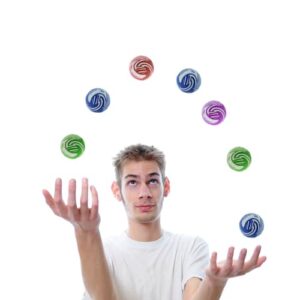
Basic Probability and Statistics Practice Questions
1. There are 3 blue, 1 white and 4 red identical balls inside a bag. If it is aimed to take two balls out of the bag consecutively, what is the probability to have 1 blue and 1 white ball?
a. 3/28
b. 1/12
c. 1/7
d. 3/7
2. A boy has 4 red, 5 green and 2 yellow balls. He chooses two balls randomly for play. What is the probability that one is red and other is green?
a. 2/11
b. 19/22
c. 20/121
d. 9/11
3. There are 5 blue, 5 green and 5 red books on a shelf. Two books are selected randomly. What is the probability of choosing two books of different colors?
a. 1/3
b. 2/5
c. 4/7
d. 5/7
4. How many different ways can a reader choose 3 books out of 4, ignoring the order of selection?
a. 3
b. 4
c. 9
d. 12
5. There is a die and a coin. The dice is rolled and the coin is flipped according to the number the die is rolled. If the die is rolled only once, what is the probability of 4 successive heads?
a. 3/64
b. 1/16
c. 3/16
d. 1/4
6. Smith and Simon are playing a card game. Smith will win if the drawn card form the deck of 52 is either 7 or a diamond, and Simon will win if the drawn card is an even number. Which statement is more likely to be correct?
a. Smith will win more games.
b. Simon will win more games.
c. They have same winning probability.
d. Decision could not be made from the provided data.
7. A box contains 30 red, green and blue balls. The probability of drawing a red ball is twice the other colors due to its size. The number of green balls are 3 more than twice the number of blue balls, and blue are 5 less than the twice the red. What is the probability that 1st two balls drawn from the box randomly will be red?
a. 10/102
b. 11/102
c. 1/29
d. 1/30
8. Sarah has two children and we know that she has a daughter. What is the probability that the other child is a girl as well?
a. 1/4
b. 1/3
c. 1/2
d. 1
Basic Probability and Statistics Answer Key
1. A
There are 8 balls in the bag in total. It is important that two balls are taken out of the bag one by one. We can first take the blue then the white, or first white, then the blue. So, we will have two possibilities to be summed up. Since the balls are taken consecutively, we should be careful with the total number of balls for each case:
First blue, then white ball:
There are 3 blue balls; so, having a blue ball is 3/8 possible.
Then, we have 7 balls left in the bag. The possibility to have a white ball is 1/7.
P = (3/8) * (1/7) = 3/56
First white, then blue ball:
There is only 1 white ball; so, having a white ball is 1/8 possible. Then, we have 7 balls left in the bag. The possibility to have a blue ball is 3/7.
P = (1/8) * (3/7) = 3/56
Overall probability is:
3/56 + 3/56 = 3/28
2. A
Probability that the 1st ball is red: 4/11
Probability the 2nd ball is green: 5/10
Combined probability is 4/11 * 5/10 = 20/110 = 2/11
3. D
Assume that the first book chosen is red. Since we need to choose the second book in green or blue, there are 10 possible books to be chosen out of 15 – 1(that is the red book chosen first) = 14 books. There are equal number of books in each color, so the results will be the same if we think that blue or green book is the first book.
So, the probability will be 10/14 = 5/7.
4. B
Ignoring the order means this is a combination problem, not permutation. The reader will choose 3 books out of 4. So,
C(4, 3) = 4! / (3! * (4 – 3)!) = 4! / (3! * 1!) = 4
There are 4 different ways.
Ignoring the order means this is a combination problem, not permutation. The reader will choose 3 books out of 4. So,
C(4, 3) = 4! / (3! * (4 – 3)!) = 4! / (3! * 1!) = 4
There are 4 different ways.
5. A
If the die is rolled for once, it can be 4, 5 or 6 since we are searching for 4 successive heads. We need to think each case separately. There are two possibilities for a coin; heads (H) or tails (T), each possibility of 1/2; we are searching for H. The possibility for a number to appear on the top of the die is 1/6. Die and coin cases are disjoint events. Also, each flip of coin is independent from the other:
Die: 4
coin: HHHH : 1 permutation
P = (1/6) * (1/2) * (1/2) * (1/2) * (1/2) = (1/6) * (1/16)
Die: 5
coin: HHHHT, THHHH, HHHHH : 3 permutations
P = (1/6) * 3 * (1/2) * (1/2) * (1/2) * (1/2) * (1/2) = (1/6) *
(3/32)
Die: 6
coin: HHHHTT, TTHHHH, THHHHT, HHHHHT, THHHHH, HTHHHH, HHHHTH, HHHHHH : 8 permutations
P = (1/6) * 8 * (1/2) * (1/2) * (1/2) * (1/2) * (1/2) * (1/2) = (1/6) * (8/64)
The overall probability is:
Pall = (1/6) * (1/16) + (1/6) * (3/32) + (1/6) * (8/64)
= (1/6) * (1/16 + 3/32 + 8/64)
= (1/6) * (4 + 6 + 8) / 64 = (1/6) * (18/64) = 3/64
6. B
There are 52 cards in total. If we closely observe Smith has 16 cards in which he can win. So his winning probability in a single game will be 16/52 on the other hand Simon has 20 cards of wining so his probability on win in single draw is 20/52.
7. A
Let the number of red balls be x
Then number of blue balls = 2x – 5
Then number of green balls= 2(2x – 5) + 3 = 4x – 10 + 3
= 4x – 7
As there are total 30 balls so the equation becomes
x + 2x – 5 + 4x – 7 = 30
x = 6
Red balls are 6, blue are 7 and green are 17.
As the probability of drawing a red ball is twice than the
others, let’s take them as 12. So the total number of balls will
be 36.
Probability of drawing the 1st red: 12/36
Probability of drawing the 2nd red: 10/34
Combined probability = 12/36 X 10/34 = 10/102
8. B
At first glance; we can think that a child can be either a girl or a boy, so the probability for the other child to be a girl is 1/2. However, we need to think deeper. The combinations of two children can be as follows:
boy + girl
boy + boy
girl + boy
girl + girl
So, the sample space is S = {BG, BB, GB, GG} where the
sequence is important.
Sarah has a girl; this is the fact. So, calling this as event A,
here are the possibilities:
boy + girl
girl + boy
girl + girl
We eliminate boy + boy, since one child is a girl. A = {BG, GB, GG}
The event that Sarah has two girls: B = {GG}
We need to compute: P(B|A. = P(B ∩ A. / P(A. = 1/3
More Statistics Practice
Date Published: Tuesday, August 15th, 2017
Date Modified: Tuesday, April 12th, 2022
Got a Question? Email me anytime - Brian@test-preparation.ca
You may also like
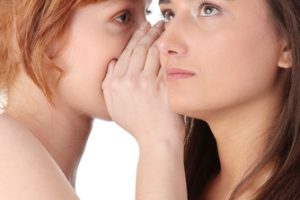
Listening Comprehension Practice – Solving a Problem
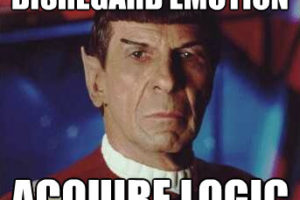
Scientific Reasoning Practice Questions
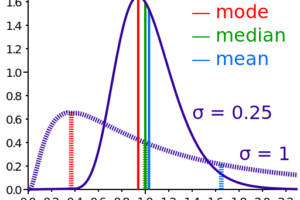
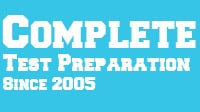
5 Comments
Hi there – I will be back to read much more
The answer to number 2 should be 4/11, which isn’t an option. The wording implies that the order in which the balls are picked out doesn’t matter. The balls can be picked out as red then green, or green then red.
The answer is correct – Combined probability is 4/11 * 5/10 = 20/110 = 10/55 = 2/11
I don’t get it, in #7, why can you take the number of red balls as 12?
4th is confusing. i need more explanation pls.